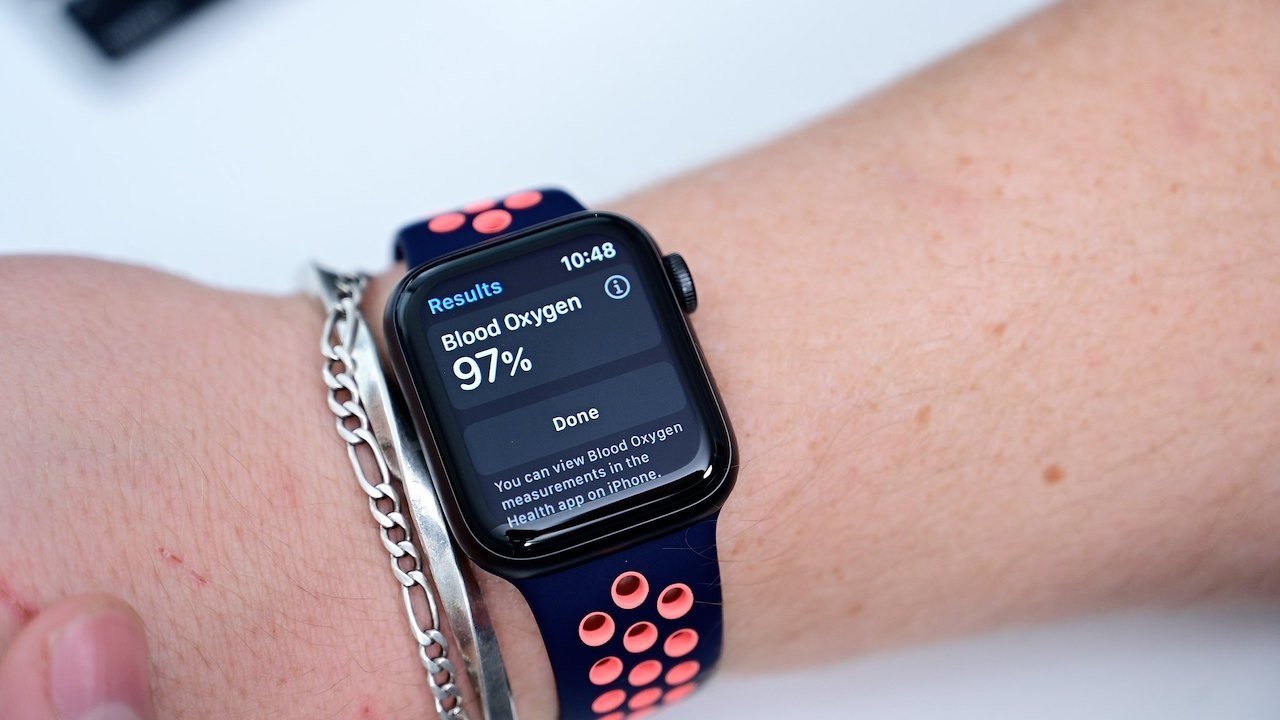Apple Watch sets new US record, now owned by 30% of iPhone users
New research claims that the Apple Watch has achieved its highest half-year "attach rate," or the percentage of iPhone users who also have an active Watch.

Credit: Andrew O'Hara, AppleInsider
Apple Watch has repeatedly dominated the whole smartwatch industry, having exceeded 100 million active users in Q2 2021.
Now while Apple Watch has seen a lot of variation quarter by quarter, Counterpoint Research says that its half-year result for H1 2022 in North America is its highest attach rate ever. That's the proportion of iPhone users who have an Apple Watch attached.
"Apple Watch reached its highest attach rate in a first half yet in North America, hitting 30%, up from 10% in 2015," a Counterpoint spokesperson told AppleInsider. "Apple Watch revenues compared to iPhone revenues in North America have also been on the rise as Apple Watch becomes more popular."
While the H1 figure is 30%, Counterpoint's full report shows more variation in the quarterly breakdown. For the most recent quarter, Q2 2022, Apple Watch's attach rate was 29% -- where for Q1 2022, it was 36%.
Back in Q4, 2020, Counterpoint says it reached as high as 40% attach rate for the quarter. Apple's closest competitor, Samsung, managed 14% in Q3 2021, but in the current quarter is on a 9% attach rate.
The attach rate fluctuates through the year as, for example, new iPhones are released and buyers may not immediately elect to buy an Apple Watch as well.
"While Apple gains a trickle of customers from the Android ecosystem every year, its key smartphone markets have reached or are near saturation," says Counterpoint Research. "This places Apple Watch at the center of Apple's hardware strategy as the company looks for top-line revenue growth."
Read on AppleInsider

Credit: Andrew O'Hara, AppleInsider
Apple Watch has repeatedly dominated the whole smartwatch industry, having exceeded 100 million active users in Q2 2021.
Now while Apple Watch has seen a lot of variation quarter by quarter, Counterpoint Research says that its half-year result for H1 2022 in North America is its highest attach rate ever. That's the proportion of iPhone users who have an Apple Watch attached.
"Apple Watch reached its highest attach rate in a first half yet in North America, hitting 30%, up from 10% in 2015," a Counterpoint spokesperson told AppleInsider. "Apple Watch revenues compared to iPhone revenues in North America have also been on the rise as Apple Watch becomes more popular."
While the H1 figure is 30%, Counterpoint's full report shows more variation in the quarterly breakdown. For the most recent quarter, Q2 2022, Apple Watch's attach rate was 29% -- where for Q1 2022, it was 36%.
Back in Q4, 2020, Counterpoint says it reached as high as 40% attach rate for the quarter. Apple's closest competitor, Samsung, managed 14% in Q3 2021, but in the current quarter is on a 9% attach rate.
The attach rate fluctuates through the year as, for example, new iPhones are released and buyers may not immediately elect to buy an Apple Watch as well.
"While Apple gains a trickle of customers from the Android ecosystem every year, its key smartphone markets have reached or are near saturation," says Counterpoint Research. "This places Apple Watch at the center of Apple's hardware strategy as the company looks for top-line revenue growth."
Read on AppleInsider

Comments
Using those metrics, the attach rate is approx:
150 million Watches / 1.1 billion iPhones = 13.6%
What strikes me as a bit counterintuitive with respect to the iPhone-Apple Watch attachment is that over the last few Apple Watch releases Apple has actually made the watch more autonomous and less reliant on the iPhone. That would seemingly result in a decrease or slower rate of growth in the attach rate. This may lend more credence to your interpretation of what is a better way of looking at the attach rate for this particular pair of products.
My gut feeling here is that the Apple Watch has simply become a more attractive product on its own and the attach rate with iPhone has less to do with iPhone and more to do with Apple Watch itself. The iPhone is still obviously a halo product that buoys up a wide range of other Apple products, and yes, you still need an iPhone to setup and make best use of an Apple Watch, but I think the Apple Watch is largely improving its attractiveness based on its own merits. If the hard iPhone dependency went away the Apple Watch would probably still do quite well.
2) I was a dedicated watch wearer... until I got a cellphone. That had the time so there was no need for a watch. Then the Apple Watch came out and I was again wearing something on my wrist, but that's because it was a lot more than a chronometer. I suspect a lot more people will go that route as the features grow, and I even hope that it eventually moves from portrait to landscape mode to take advance of the space on the wrist.
I, finally, went from my AW 4 to the 8. I do not regret it. What a difference…and on top I got some dollars back